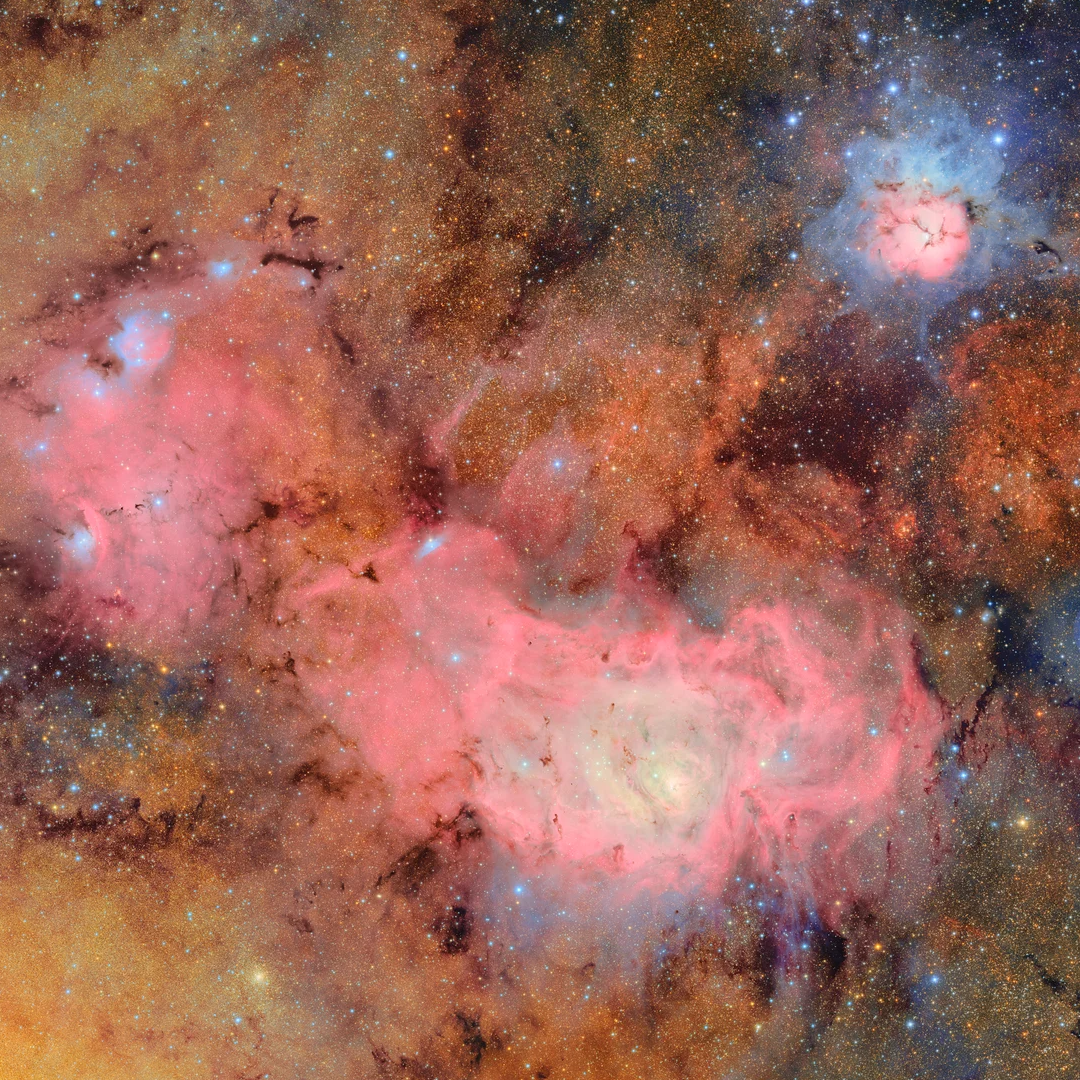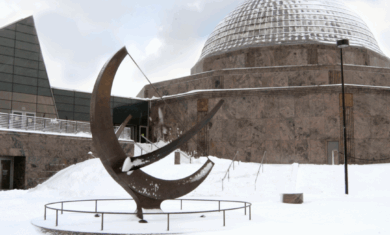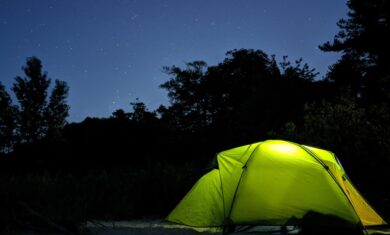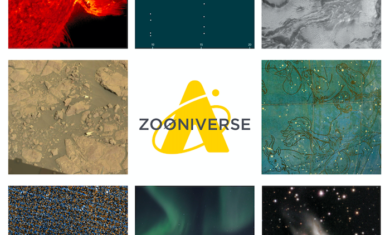First Look At Vera C. Rubin Observatory “First Light” Images

Header Image: Trifid and Lagoon Nebulae. Image Credit: NSF–DOE Vera C. Rubin Observatory.
This week, the Adler Planetarium hosted one of the global watch parties for the new first light imagery coming from the Vera C. Rubin Observatory in Chile. Dozens of institutions worldwide hosted the livestream to celebrate the public release of the first images that will be a part of the largest astronomical movie of all time!
We are excited to continue our collaboration and longstanding support with Vera C. Rubin Observatory. The Rubin Observatory is expected to provide data to answer the question of the existence of Planet Nine, the subject of a prominent sky show created and available for viewing at the Adler.
For the next ten years, the Rubin Observatory will use its Legacy Survey of Space and Time (LSST) camera to take detailed images of the southern hemisphere sky, covering the entire sky every few nights and creating an ultra-wide, ultra-high-definition, time-lapse record. This unique movie will bring the night sky to life, yielding a treasure trove of discoveries: asteroids and comets, pulsating stars, and supernova explosions.
What Is First Light?
“First light” is the term used when a new telescope, in this case the Simonyi Survey Telescope, is pointed at the sky to check the performance of the entire system, as the telescope and its instruments are tested to their full potential.
“NSF–DOE Rubin Observatory will capture more information about our Universe than all optical telescopes throughout history combined,” said Brian Stone, performing the duties of the NSF director.
A Close Look At The New “First Light” Images
Released for the first-time earlier this week, the stunning sets of first light images, taken over the past few months, show a variety of the types of objects that this telescope will excel at locating and tracking over time, including the following.
1. The Lagoon And Trifid Nebulae
The Lagoon and Trifid Nebulae are popular summertime telescope targets. The image highlights Rubin’s unique combination of an extremely wide field of view and its ability to take a large number of big images in a very short time. Combining many individual images reveals subtle details in clouds of gas and dust like these nebulae.
This image was created from 678 exposures taken in only 7.2 hours of observing time, and was composed from about two trillion pixels of data in total. No other observatory is capable of producing such a wide-field image so quickly and with this much depth and detail.
2. The Virgo Cluster Of Galaxies

The Virgo cluster of galaxies is the closest large collection of galaxies to our own Milky Way galaxy. Except for a handful of foreground stars located in our own Milky Way galaxy, the rest of this enormous image is composed of galaxies – about 10 million in all. This is a huge number of galaxies, but it is only 0.05% of the roughly 20 billion galaxies that Rubin will image during its 10-year survey. By the end of the survey, we will see this level of galactic detail across the entire southern sky.
3. Imagery Movie Clips Containing Over 2,000 Previously Unknown Asteroids
In the video above, the Rubin Observatory showcases its unique ability to detect large numbers of small and dim objects orbiting the Sun. These first frames show asteroids in our Solar System in motion against the static background of stars and galaxies in the Virgo Cluster.
Of the almost 4,000 asteroids that are in these initial images, 2,104 of them had never been catalogued before, including 7 near-Earth asteroids, 11 Trojan asteroids that share Jupiter’s orbit, and 9 objects orbiting out past distant Neptune. And this is only the very start of what is expected to be an incredible haul of previously-unknown asteroids, comets, and more. These images were taken in just 7 nights. Imagine what we’ll find during the next 10 years!
4. 46 Variable Stars
This video showcases 46 subtly pulsating stars detected in this first set of observations. These stars regularly change in brightness, and these brightness changes can tell us a lot about how these stars work. Objects that change in brightness in our Universe are often some of the most interesting to study, and Rubin will excel at finding and tracking variable stars, supernovae, novae, and more.
These new first light images are now among the options for pre-show looks you can see at the Adler before our Skywatch Live shows. See these brand-new images in an immersive full-dome experience, purchase your tickets today.
Next Steps For The Vera C. Rubin Observatory
After further commissioning work, the observatory is expected to begin science operations later in 2025, and annual science data releases will start in 2026. During the LSST program, the Rubin Observatory will operate automatically, with the 27.5 ft telescope capturing images using the largest camera ever built.
Images will be around 40 seconds long, each encompassing an area of sky equivalent to that of 45 Moons. Dedicated computer facilities will process data in real time and issue worldwide alerts, within minutes, of detected changes.
This unique effort is expected to create a treasure trove of discoveries about asteroids and comets, supernova explosions, and more. In addition to increasing our understanding of known objects, one of the most exciting things will be the likely discovery of brand new types of variable objects that we don’t even know about yet!
Get Involved With First Light Data
Want to explore the skies? You, the public, will be able to help astronomers discover unusual objects with this new data through Adler Zooniverse.
The Zooniverse connects research teams with more than 2.7 million volunteer “citizen scientists” all over the world. Together, our volunteers analyze data sets too tricky for computers to parse and too big for any research team to tackle on its own.
Rubin Observatory has partnered with Adler’s Zooniverse to invite the public to take part in real scientific research using Rubin data. Our first Rubin–Zooniverse projects will launch in the coming weeks—stay tuned!
Subscribe to our emails to be the first to know about upcoming Rubin-Zooniverse projects.







